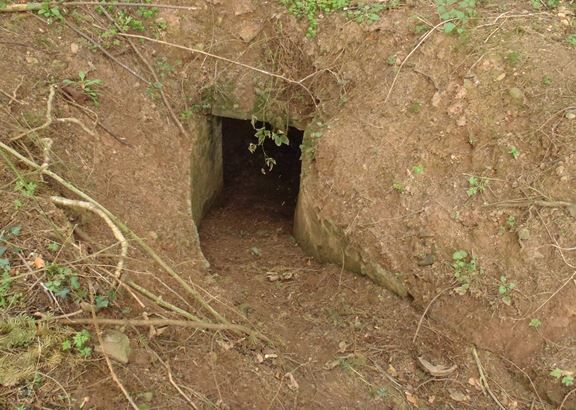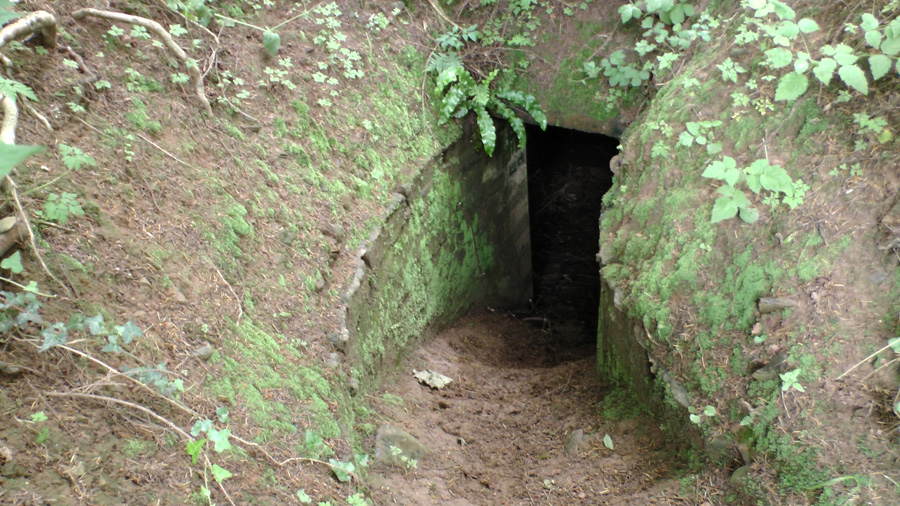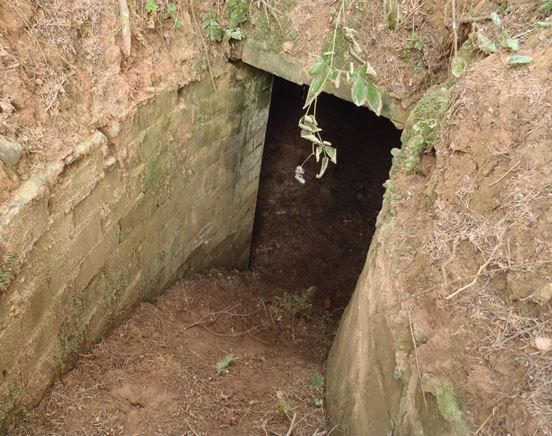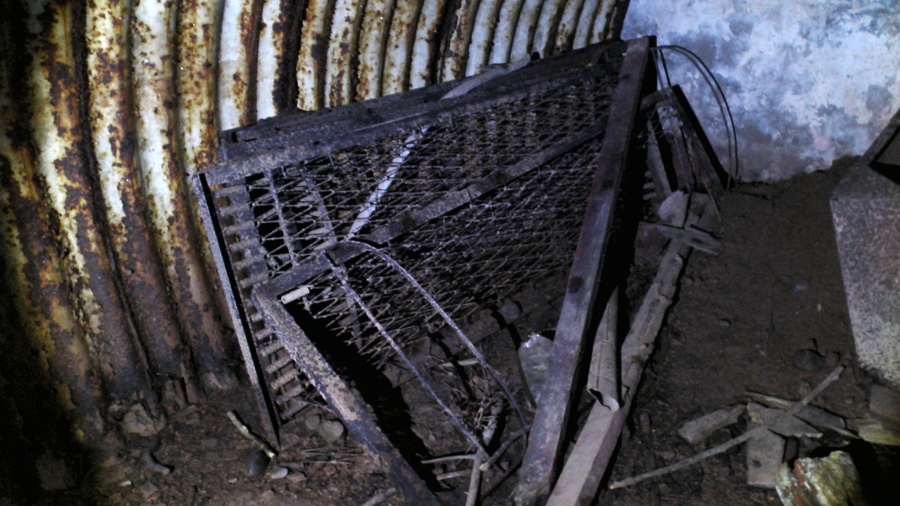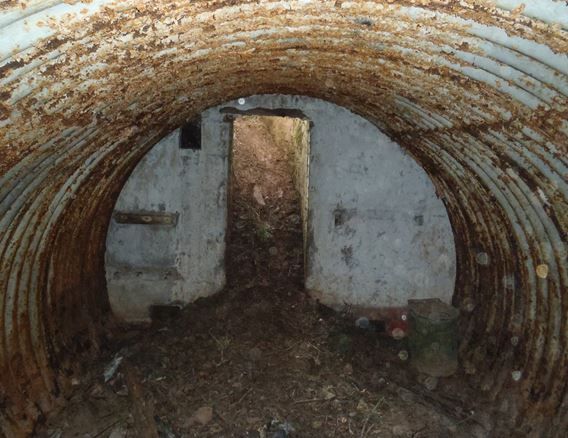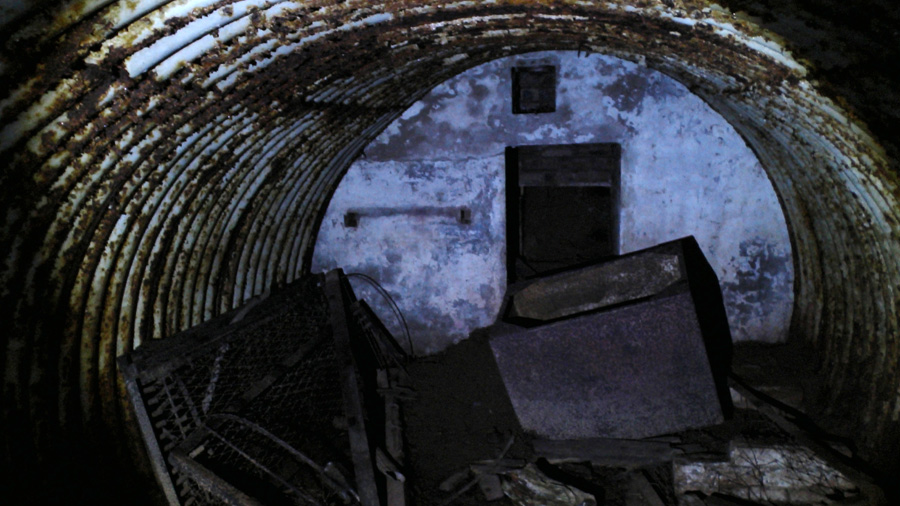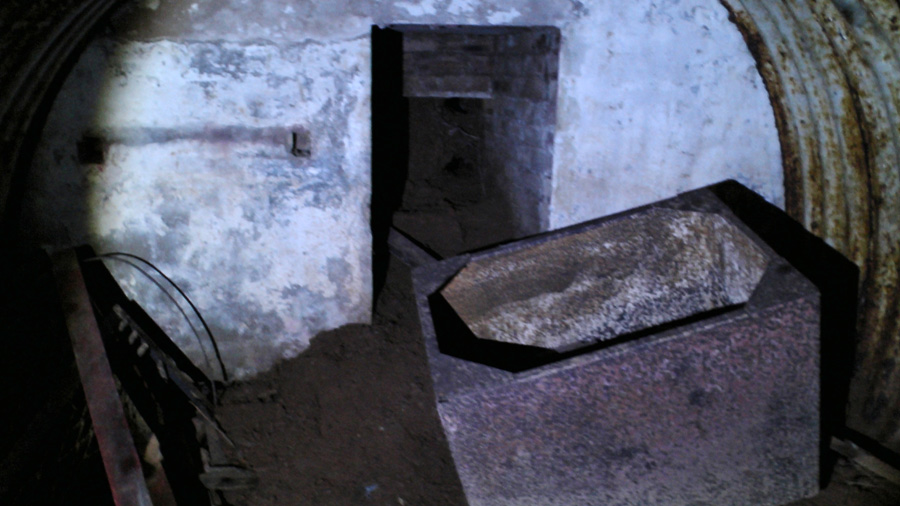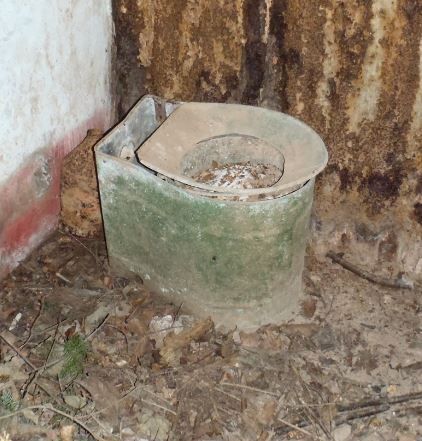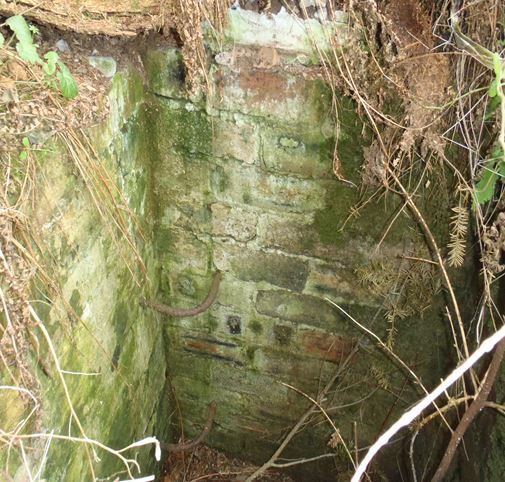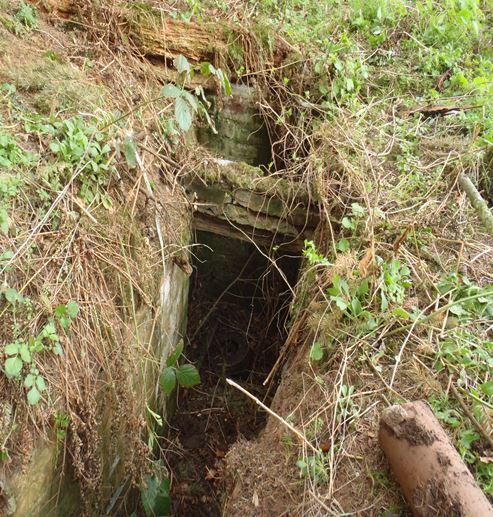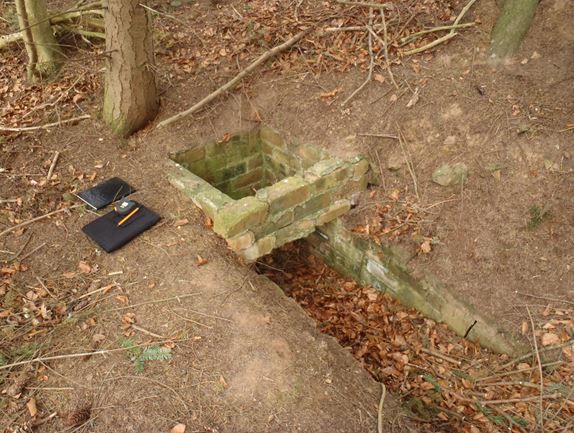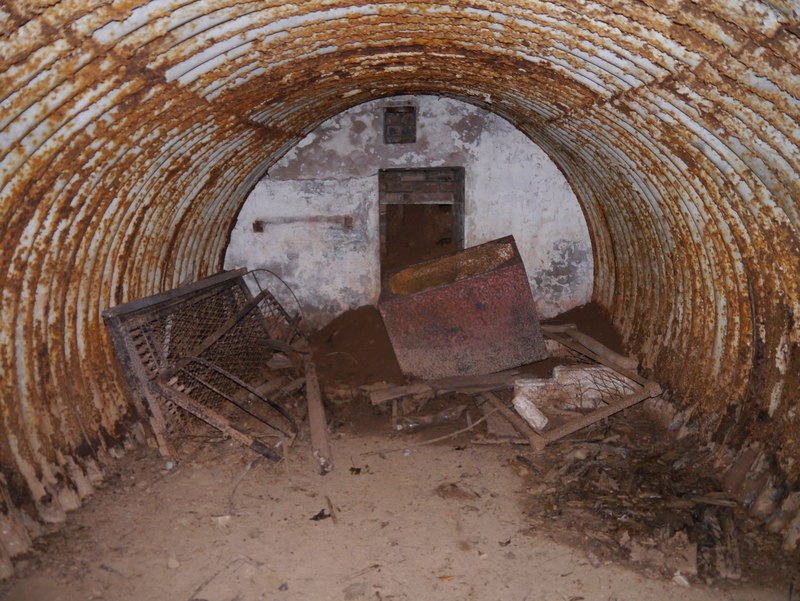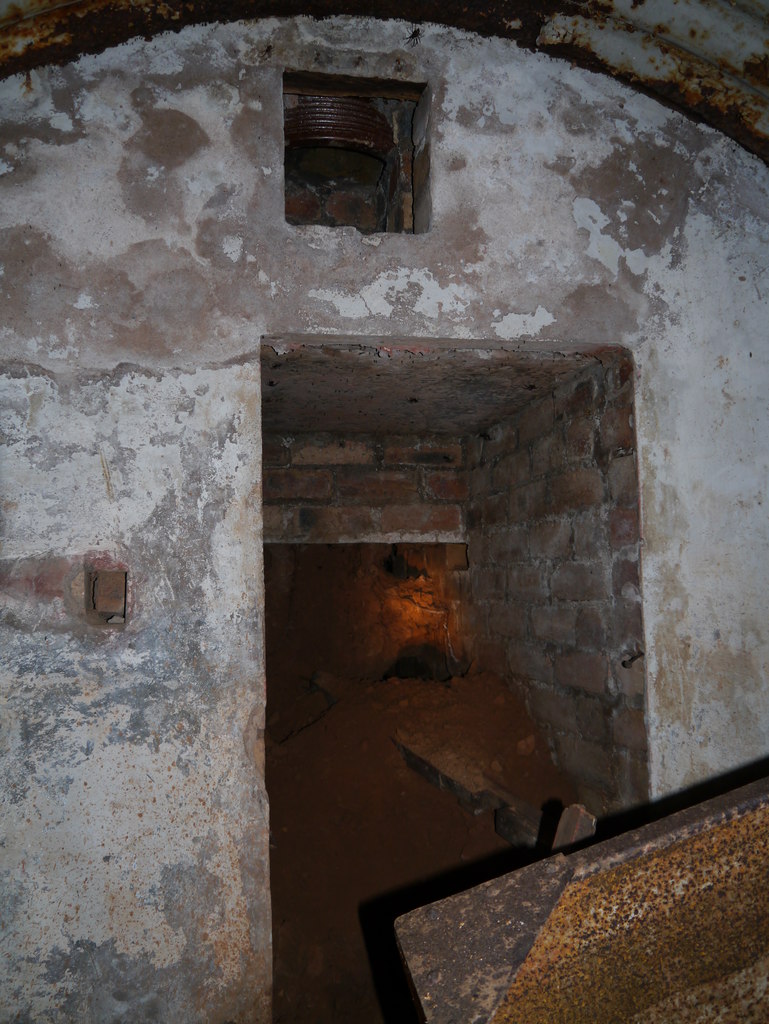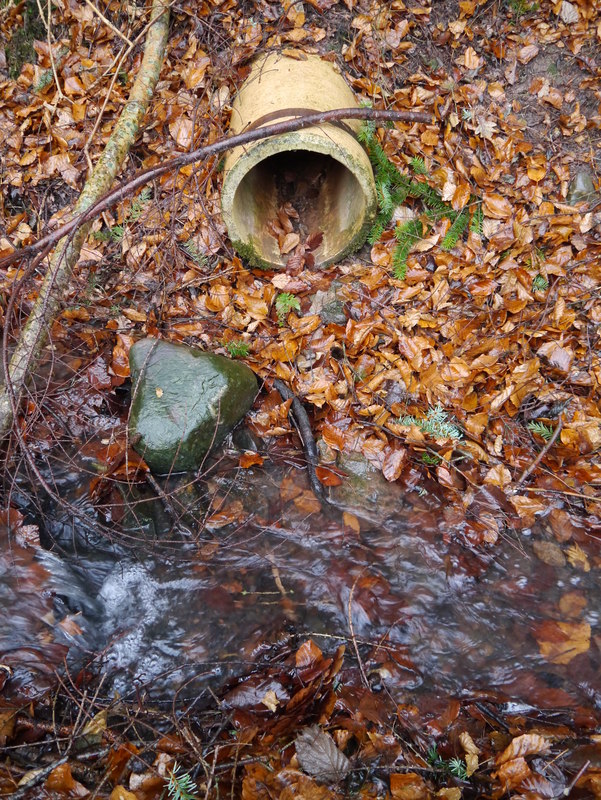Newton St Boswells is a village 2.5 miles south-east of Melrose, roughly 10 miles west of Kelso, in the Scottish Borders. The main A68 north - south road cuts through St. Boswells as well as several east - west minor roads cross nearby.
| Name | Occupation | Posted from | Until |
|---|---|---|---|
| Corporal T. Crombie | Agricultural engineer |
1941 | 1944 |
| Lieutenant Joseph Featherstone | Baker |
1941 | Unknown |
| Private J. Grant | Mill worker |
1941 | 1944 |
| Private J. Hunter | Electrician |
1941 | 1944 |
| Private W. Story | Railway man |
1941 | 1944 |
The Patrol's OB is located in woodland near the golf course to the north of Group Headquarters at Monksfield House close to the river Tweed.
2013 OB is in a remarkable state of preservation. It has stood there since 1940 and all because people have not damaged anything it has stood the test of time. The interior was dry during my visit, some internal infill from above having come down into the entrance to the escape tunnel. Recently concrete has been poured into the hollow above and ran into the tunnel making it almost impossible to continue along the escape tunnel. There is a horseshoe shape tunnel to and from OB.
The bunk beds are still in situ albeit the metal frames are, the fresh water tank is still inside and various parts of a wooden door with hinges is amongst the floor debris. The Elsan chemical toilet is there and filled with cement, making it very heavy to lift.
The structure is an "Elephant" type shelter:
6.4 metres in length (from entrance to escape tunnel door)
2.8 metres wide
2.1 metres high (from middle of ceiling to clear floor level)
570mm entrance width
Escape tunnel width 570mm and hatch 600x600mm
(All dimensions are approximate due to structure age/condition)
2024 The photos below show the current condition of the Newton St Boswells OB. Despite being in good condition and accessible only a few years ago, it is now basically non-existent and completely collapsed or blocked up and inaccessible.
There is a well used and signposted walkers path from the farm that goes through the wood and over the top of it so it is suspected it was deliberately backfilled as previously it was much less widely used.
Using a video from Youtube, we found the right location (based on tree positions and shapes) and on one side of the path we found the area where the entrance was and on the other side of the path was the escape tunnel area. Neither are visible as anything more than shallow depressions and broken brickwork.
Newton St Boswells
Obvious targets would have included the Borders and East Coast main line railway along with the A68 main north - south road and several minor east - west roads. The OB sits near to the now disused rail-line.
The Borders Auxiliary Units had a plan to control all the main roads around the area to limit German movements.
A military target would include the Charlesfield Incendary Bomb and Munitions Plant and Depot to the South West.
Some of the Patrol went to Coleshill for specialist courses though during 1942 it was decided to send out written and practical exams as the travel to Colehill ended up as a four day trip for two days training.
The Patrol would have trained locally along with at Monksford House Stables, the Area Headquarters not far from the Patrol OB and at Otterburn Ranges in Northumberland with the army.
Weapons issued to the Patrol included; Thompson Sub Machine Gun (3) .38 Smith & Wesson Revolver (for all in Patrol), BSA Model 12/12A (two supplied by Intelligence Officer Forbes), Fairbairn Sykes fighting knife (for all in the Patrol), various homemade weapons, including a variation on the issued Monk Garrotte.
Explosives included; time pencils and pressure switches, detonator cord –Bickford/instantaneous (orange line), Cordtex/Primacord, Nobel 808/Plastic (most of the Patrol tasks were associated with blowing rail track) other home made (IED type; in the modern sense of the word).
Richard Mazur told us (2022) "I lived in the stables, Monksford (a private estate about a mile and a half north of the village) in the 1950’s and 60’s when my mother was secretary to the owner. I discovered this when I was about 11 years old. I remember the bunk bed mattress was blue and white stripes. I thought it was an abandoned air raid shelter. It was in a small copse near the main railway line which was still running then. Joe Featherstone was still the village baker and I was friendly with his son, Michael. There was also an abandoned POW camp on the hill above the village at that time.”
The National Archives in Kew ref WO199/3388,
Hancock data held at B.R.A
David Constantine (2024)
Damian "Fellwanderer" for the photos and James T.M. Towill for 2013 photos
David Blair - My thanks to Roy, Cameron and Derek Brown for their superb on the ground research and local knowledge and hospitality during my visit. 2 others who wish to remain anonymous; both supplied information relating to training and weapons.
